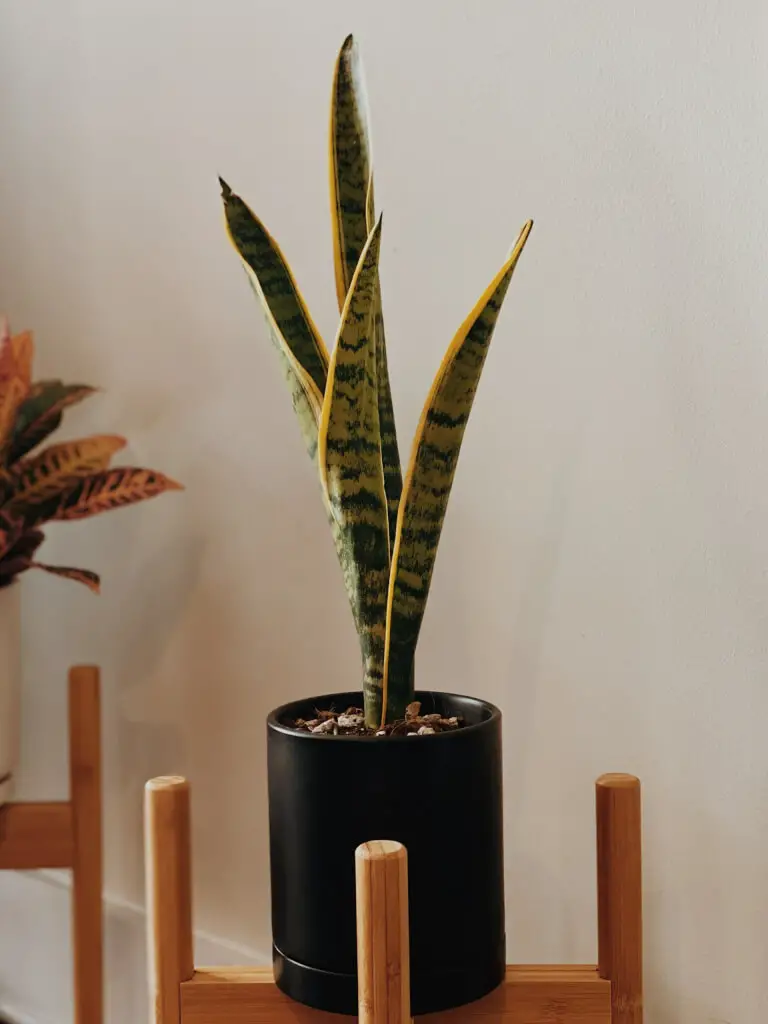The snake plant grows several inches and gets two to four new leaves every season. However, the snake plant commences its dormant mode in winter, where new growth is non-existent.
Ultimately, how fast your snake plant grows depends on a few factors. When these factors are consistent, your plant will grow at the expected rate.
How Big Do Snake Plants Get?
Snake plants, on average, reach approximately 1-2 feet, with their leaves growing to 14 to 22 inches. Some plants are known to hit 5 feet and above with optimal conditions prevailing.
The Best Growing Season
The snake plant's growing season runs from spring to summer. This period is the only time you can observe new growth on snake plants. If you meet certain conditions during the growing season, the plant will thrive.

What Conditions Affect the Growth Rate of Snake Plants?
There is an array of factors that dictate growth. It is possible to manipulate these aspects to either slow down or increase your plant's growth rate. They include;
-
Using the Right Size of Pot
Snake plants are climbers, meaning if put in tiny pots, there will only be vertical growth at the expense of horizontal development. Plant width is crucial for leaf growth, and lack of it prevents the roots from going deeper into the soil, leading to stunted growth.
-
Placing Plant in Sunlight
How much light do snake plants need? Putting the snake plant on the balcony or patio ensures that the plant absorbs lots of sunlight instead of indoors, where the light is minimal. To avoid overexposure, it's a great idea to place your snake plant close to a window facing East with indirect sunlight.
-
Being on the Lookout for Pests
Pests can wreak untold devastation to your snake plants. They love chewing off the leaves, leaving your plants looking uncared for and ugly. At the first sign of leaf damage from pests, neem oil comes in handy as a deterrent.
-
Using Fertilizer
Applying fertilizer on the soil is a popular way of making the snake plant grow faster. Make sure that you water it afterward so that the plant will absorb the nutrients more quickly.
-
Regular Watering of the Snake Plant
How much water do snake plants need? It is advisable to water your snake plants often to ensure that the soil stays moist. This condition goes for summer, spring, and fall. However, in winter, when the plant is dormant, do it less often. Remember, excessive watering leads to the rotting of the roots.
-
Increasing the Humidity
Snake plants tend to do better in humid environments. Warm up your house to increase the humidity all day long.

5 Things Affecting Your Snake Plant's Growth Rate
‘Why is my snake plant not growing?'. Here are some factors that may inhibit the growth of your plant;
-
Over-Fertilization
Fertilizing your snake plant is essential to remarkable growth. It is advisable to fertilize the plant 2-3 times in the growing period. However, fertilizing the plant is not recommended during winter (the dormant season). Overfertilization manifests in earthy-colored tips, plus withering of the plant.
-
The Potting Soil Used
Soil plays an essential role in the plant's growth by absorbing nutrients and minerals. If you use soil that doesn't drain well, it tends to be overwatered, which doesn't end well for the plant.
-
Adjustment Period
Like other houseplants, the Sansevieria needs to adapt to the environment. Probably the plant experienced different conditions previously, and now the conditions have changed. For instance, after buying the snake plant, it may undergo some trauma when being packed, transported, and repacked. The sudden change calls for some adjusting time.
-
Lack of Pruning
Like other plants, snake plants need regular pruning for remarkable growth. The snake plant sheds off unwanted leaves through regular pruning and grows well.
-
Lack of Drainage Holes
Excess watering can damage the roots of the snake plant. In that case, it is in your best interests to drill drainage holes underneath the planter to get rid of excess water. When the roots decay due to overwatering, they'll be an irresistible attraction for bugs and pests such as mites, aphids, and spider mites.

Having a healthy-looking and beautiful snake plant can be a fulfilling and exhilarating experience. Snake plants rank among the simplest plants to care for and multiply, whether you are a seasoned gardener or not.
If your Sansevieria is not growing as expected, there's a problem that needs consideration.

